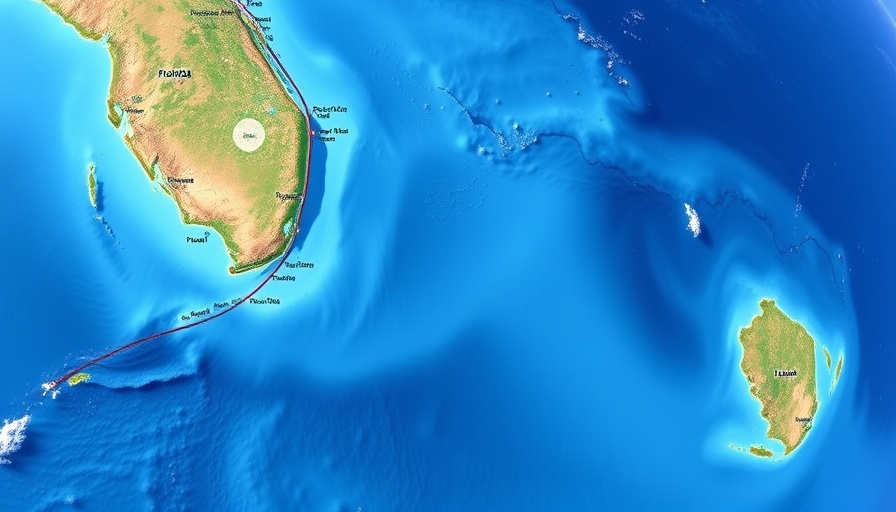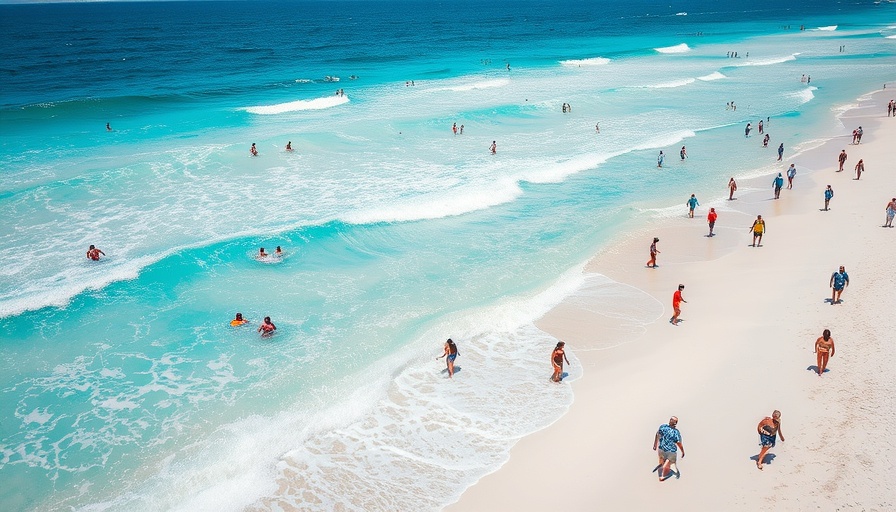
A Frightening Encounter in Florida's Waters
A recent incident off the Florida Gulf Coast has ignited discussions about shark safety and beach enjoyment. Nine-year-old Leah Lendel was snorkeling in Boca Grande when she was attacked by a shark, nearly losing her hand. As the wave of hysteria swept through nearby beachgoers, Leah's mother, Nadia, recounted hearing a frantic yell from her daughter, followed by the horrific sight of blood filling the water.
In today’s society, where beaches are synonymous with family fun and relaxation, such an encounter raises urgent questions about the safety measures in place for swimmers and snorkelers. This headlines not only captured the attention of local residents but also drew national concern about sharks in recreational areas. It represents a stark reminder that the ocean is home to these powerful predators, even in popular tourist spots.
Understanding Shark Behavior and Beach Safety
The shark that attacked Leah was reported to be around eight feet long, a significant size for a predator in coastal waters. According to marine biologists, attacks on humans are rare, often linked to misunderstandings between species. Despite misconceptions, sharks do not typically prey on humans; instead, they may bite out of curiosity. This incident prompts a call to action for better public education about shark encounters and preventive measures to increase safety while enjoying the ocean.
While Leah displayed remarkable bravery during the ordeal—her mother noted that Leah didn’t shed a tear—an event like this can be traumatic. It is vital for families to discuss safety tips when going to the beach, such as avoiding swimming in murky waters or during dusk and dawn, times when shark activity tends to rise.
The Importance of Immediate Response
One of the encouraging aspects of the situation was the swift action taken by nearby construction workers who helped wrap Leah’s hand before the emergency services arrived. This reinforces the importance of having trained individuals on-site who can respond accurately in emergencies. The effectiveness of first responders is often crucial in such scenarios—paramedics opted to airlift her to Tampa General Hospital, where she underwent surgery. Stories like Leah's often highlight how critical it is to have good support systems on beaches and community alerts about shark activity.
Moving Forward: Community Awareness and Education
In the aftermath of this chilling incident, it’s essential for communities to come together to enhance safety measures at public beaches. Educational campaigns about marine life have proved successful in reducing negative interactions and fostering respect for ocean habitats. Initiatives such as beach safety workshops, shark awareness programs, and the reinforcement of lifeguard patrols can significantly improve public understanding and preparedness.
Likewise, utilizing technology could revolutionize how individuals perceive the dangers of swimming in these waters. Real-time alerts about shark sightings can allow beachgoers to make informed choices. Moreover, the integration of drone surveillance at popular beaches could provide a layer of safety by monitoring marine life more closely.
Ultimately, Leah’s story is a deeply human one, planted against the backdrop of a sobering reality about our oceans and their inhabitants. It serves as a plea for awareness, caution, and action—a call for beachgoers to stay informed and safe while enjoying the sun and surf. As we reflect on this event, let us remember the delicate balance between cherishing our ocean environments and recognizing the dangers they may pose.
To prepare for your next beach visit, consider reviewing local shark safety guidelines, staying alert to warnings, and participating in community ocean safety events. Together, we can ensure a safer experience for all beach lovers.
 Add Row
Add Row  Add
Add 




 Add Row
Add Row  Add
Add 

Write A Comment